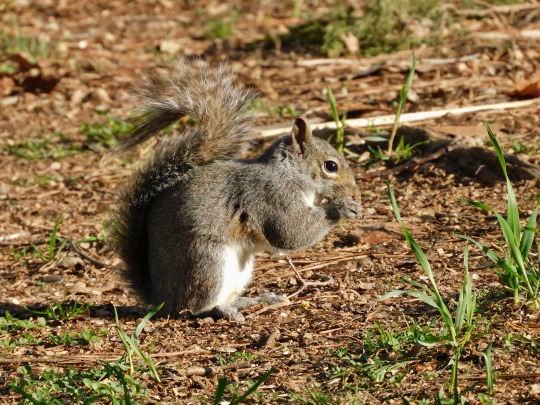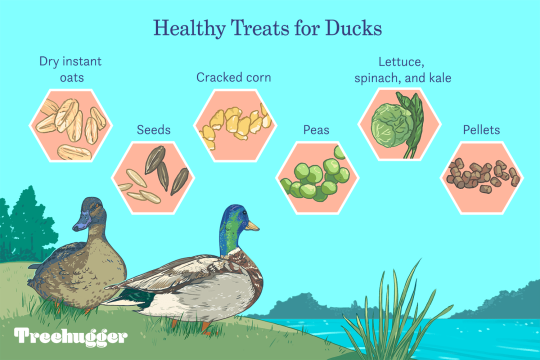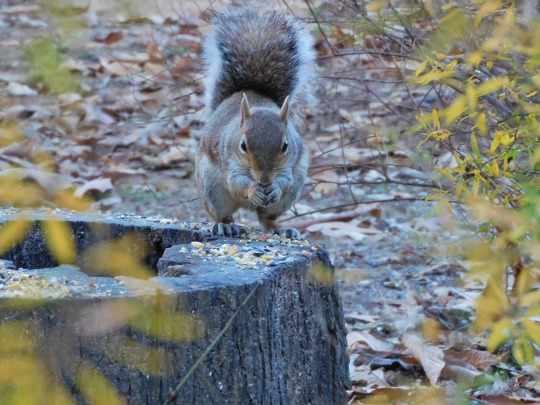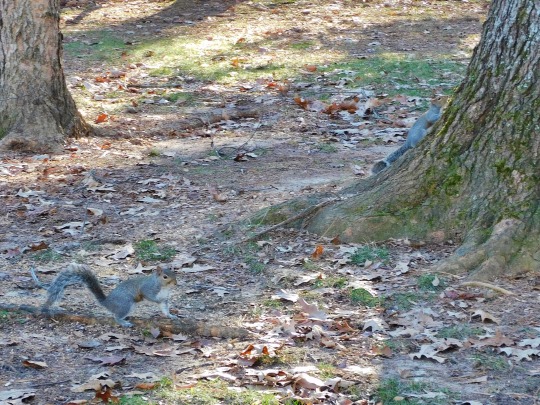#feeding wildlife
Text
Unsurprisingly, a lot of the commentary I'm seeing about this has been of the "But--but--I would do the same thing because I don't want anything bad to happen to the deer!"
Look. I love wildlife, and I love getting to see deer, coyotes, and even the occasional black bear in my neighborhood. But they are here because there is good habitat nearby with lots of natural food sources, not because I deliberately put out food for them to eat. I respect them as wild animals with whom my relationship is very different compared to the domesticated animals I take care of every day. A deer is not a sheep or a horse; a coyote is not a dog.
People who do things like try to tame deer or, worse yet, try to raise a fawn or other young wildlife like pets are robbing those wild animals of their natural existences. We've already wrought our own preferences on the landscape to a severe degree, tearing the wildness out of it to create lawns and farms and subdivisions and strip malls. When we then dismiss the wildness of these animals and impress our own desire for connection on our terms on them, we are harming them.
I've already written elsewhere about the difference between "tame" and "domesticated". No matter how docile that deer seems, it is never going to be as (relatively) safe and tractable as a domesticated sheep or goat. It will always be more unpredictable, and more likely to lash out suddenly at a person due to fear, or hormones, or protection of young.
These animals need their wild instincts to be intact if they are going to survive without being dependent on us. They need those instincts in order to find mates and keep the gene pool stirred up. Their instincts keep them safe from danger, including humans. And their instincts never totally go away, no matter how much we may try to tame them otherwise.
This is why a good wildlife rehab is going to minimize handling of the wild animals they care for, especially those that are going to be able to be released back into the wild. The less comfortable these animals are with humans, the better their chances of surviving in the wild and having fulfilling, natural lives. Wildlife that retain their wariness of humans are less likely to end up falling prey to hunting, or being killed as nuisance animals when they get too aggressive in seeking food or otherwise coming into conflict with people.
The person who painted "pet" on a fully grown white-tailed buck and put a collar around his neck may have felt like they were doing that deer a kindness, but they have likely robbed him of the chance to just live a natural life as his own, independent being out in the woods and fields. He might be out there, sure, but perhaps he won't mate because he imprinted on humans. Or maybe he will end up shot by a hunter in spite of the precautions because he's just too friendly and those antlers are worth taking the shot.
There will always be something missing from this deer's life because of the arrogance of someone who thought they could own and keep and control a wild-born animal for their own enjoyment, instead of allowing him to come and go as he pleased. Honestly, it reminds me of King Haggard from Peter S. Beagle's The Last Unicorn, whose response to seeing something beautiful was to capture it and keep it rather than simply enjoying and remembering that magical moment:
"I like to watch them. They fill me with joy. The first I felt it I thought I was going to die. I said to the Red Bull I must have them, all of them, all there are. For nothing makes me happy but their shining and their grace. So the Red Bull caught them. Each time I see the unicorns, my unicorns, it is like that morning in the woods and I am truly young, in spite of myself."
That's how I feel about people who are willing to drastically alter a wild animal's behavior for their own selfish benefit, even if they think they're being kind. I know I'm fighting a bit of an uphill battle in this, but I'm rather stubborn that way.
#deer#wildlife#wild animals#nature#animal welfare#animal cruelty#hunting#white tailed deer#zoology#animal behavior#ecology#environment#conservation#wildlife conservation#feeding wildlife#pets#animals#The Last Unicorn
1K notes
·
View notes
Text
homunculus facts¡
homunculi are not allowed to perform in chrismas pageants at most churches because we are sins against god•
i still think i would slay as one of the magi• there is literally frankincense and myrrh in my blood•
homunculi made with chicken instead of beef are lower in fat' higher in protein' and capable of short burst flight•
theophrastus may be well·known for his ideas about alchemy but i don,t know if he ever made a real homunculus• not to stir up drama' but i don,t know her• ತ_ʖತ
master gathered all of the homunculi in the lab for christmas cookie decorating this week¡ if some of the boys didn,t make enough cookies' he unmade them' and then he sold them all without giving us a cut of the profit• he,s a paragon of wizardliness•
i snuck a cookie back to my drawer and fed it to the beetles• they died horribly• ( ꈍᴗꈍ)
never travel without your towel¡
#homunculus#homunculus facts#wizardposting#alchemy#unreality#christmas pageant#gold frankincense and myrrh#recipe hacks#theophrastus#youtube drama#christmas traditions#feeding wildlife#the hitchhiker's guide to the galaxy
83 notes
·
View notes
Text
Just found a YouTube channel dedicated to feeding wild foxes

134 notes
·
View notes
Text







Assorted Eastern Gray squirrels (Sciurus carolinensis) on this fine day...
#nature#my photography#feedlot#squirrel#backyard nature#gray squirrel#wildlife photography#feeding wildlife#nature photography#eastern gray squirrel#peanut
8 notes
·
View notes
Text
Toothless wondering where his peanuts🥜 is.--Loki💛😺
#cats#plushie#puppet#cat#stuffed animals#puppetry#plush animal#plush toys#puppets#plush cat#puppets of tumblr#puppet show#wholesome#web series#tiktok#crow#corvidae#corvids#feeding wildlife#wildlife#symbiotic relationship#crows#outtakes
2 notes
·
View notes
Text
With my minor, uncertified experience in animal rehabilitation (my mom and I helped a squirrel rehabilitator), I'm pretty okay with feeding animals as long as it's consistent, varied, and safe for the animals in your area. Feeding birds, squirrels, possums and deer isn't a huge problem as long as it is consistent and with animal safe food. Feeding them isn't really a problem. They are animals that are less likely to cause you harm. Possums especially are pretty safe considering they can't pass rabies or even harbor it because their body temperature is too low to do so. Deer, birds, and squirrels can carry a few more diseases but if you're not hand feeding them, you're pretty good. Just set up a spot and they're pretty good. Although this is more recommended in rural areas such as where I live where they're less likely to end up in the road. And usually rural areas are good for releasing animals. That was what my mother and I did with squirrels. We have a forest in our backyard so they had lots of space to roam and be protected.
The maybe problem is with stray/feral cats. If you participate in TNR, then continue feeding cats because TNR helps keep them and other animals safe. If you don't participate in TNR, that's where problems emerge especially if you live in the US where cats are an invasive species.
The bigger problem is with foxes and raccoons. If you aren't a wildlife specialist, don't do it. Foxes have to learn to hunt and you could harm them more than help. If they rely on you for food, what's gonna happen if you don't have someone to feed them? Not to mention foxes do harm people. Same for raccoons. It's dangerous for you and the foxes and raccoons especially if you don't know what you're doing.
Do not feed bears. If you want a bear opening your front door or totaling your car, then fuck I can't stop you but don't feed bears. They're adorable. I love bears with all my heart. I'm not feeding them. Not only does feeding them create a reliance on humans but it endangers everyone in your area. If the bear fucks up enough, they can be sent to zoos or be euthanized and while a lot of zoos are helpful for rehabilitation, you don't want to send more bears there. Feeding bears can get you and your family and your pets killed. If you live in a bear-populated area, do not feed any wildlife. Do not set up stands. You are inviting death by doing so. If you get mauled by a bear, that bear also dies. If you love bears, you will not feed them.
0 notes
Text
1 note
·
View note
Text

Don't feed bread to ducks!
Find out more:
4 Reasons Why You Shouldn't Feed Bread to Ducks (treehugger.com)
Wild Birds Unlimited - Nature Shop (wbu.com)
Do's and Don'ts of Duck Feeding - Maine Audubon
**********************************************************

5K notes
·
View notes
Text
The Effects of Feeding Wildlife: Impacts on Animal Behavior, Population Dynamics, and Human Health
Feeding wildlife can have far-reaching consequences, both positively and negatively. It is important to understand the potential impacts that feeding wildlife can have on the behavior of individual animals, population dynamics, and human health.
Impacts on Animal Behavior
Feeding wildlife can change the behavior of individual animals by:
Reducing the fear of humans, which can lead to an increase in human-wildlife interactions
Increasing the activity of the animal, which can lead to increased energy expenditure and reduced energy reserves
Modifying the species diet, which may lead to imbalances of essential nutrients and vitamins
Leading to overcrowding in feeding sites, which can create competition for resources, increase the risk of disease transmission, and increase the risk of injury
Impacts on Population Dynamics
Feeding wildlife can also have impacts on population dynamics, such as:
Changing the behavior of the species in the area, which can affect the abundance and distribution of other species
Affecting the reproductive potential of the species, as juveniles may be more susceptible to predation in areas with dense human activities and artificially concentrated food sources
Altering the existing food web, as organisms may begin to rely on humans for an unnatural and unreliable food source
Human Health Risks
Finally, it is important to consider the human health risks associated with feeding wildlife. These risks include:
Exposure to zoonotic diseases, such as rabies, salmonellosis, and hantavirus
Exposure to arthropod-borne diseases, such as Lyme disease, West Nile virus, and eastern equine encephalitis
Injury from contact with wild animals, such as bites or scratches
contaminations of water sources, as wildlife can spread pathogen-carrying feces across a large area in a short period of time
Pollution of habitats, as large concentrations of wildlife can create high levels of waste
Overall, it is important for people to understand the potential impacts of feeding wildlife and to practice caution when interacting with wildlife.
Questions and Answers
What are the potential impacts of feeding wildlife?
Feeding wildlife can have impacts on the behavior of individual animals, population dynamics, and human health. Behavioral impacts can include reduced fear of humans, increased activity levels, modified diets, and overcrowding at feeding sites. Population dynamics impacts can include changes to the species’ behavior, reproductive potential, and the altered food web. Human health risks can include exposure to zoonotic diseases, arthropod-borne diseases, injury from contact with wild animals, contamination of water sources, and pollution of habitats.
What precautions should be taken when feeding wildlife?
It is important to be aware of the potential consequences of feeding wildlife, and to practice caution when interacting with wildlife. People should never feed wild animals without proper knowledge and precaution, and should always keep a safe distance from the animals when possible. In addition, people should follow all state and local regulations regarding the feeding of wildlife.
#The Effects of Feeding Wildlife Impacts on Animal Behavior#Population Dynamics#and Human Health#feeding wildlife
0 notes
Video
youtube
Feeding 2 Swans At Park By Hand Scoop Up Close
A video from today of me feeding 2 swans at a park with a hand scoop of food. Today was my first time feeding swans up close, and it's given me a simple yet wonderful feeling of connecting with nature and caring for our wildlife. 🦢
This video was recorded by my mum on her phone, much appreciated! 😃
_
■ Iᴛᴇᴍs & Sᴏᴜʀᴄᴇs
● 𝗙𝗼𝗼𝗱: Brambles Swan & Duck Food 1.75kg
● 𝗦𝗰𝗼𝗼𝗽: Wilko Plastic Garden Scoop
0 notes
Text
still remembering that one scientific paper where a bunch of ornithologists tried to figure out the kind of deleterious effect eating a diet of mostly human-derived food scraps was having on city populations of crows and came away with "sigh... high sodium levels don't appear to have a strong impact on crow health... still, don't feed them if you can help it on principle"
#like it's true don't feed wildlife if you can help it#always asking for trouble#but it's so funny to imagine a bunch of tired looking scientists going#“yeah... we examined the bodies of crows that lived mostly off of burger king dumpsters and they're basically healthy... (beleaguered sigh)
110 notes
·
View notes
Text

But at least the animal isn’t starving, right?? Right????
#memes#this is mainly aimed at the neighbor who fed sandwiches to raccoons and they lost their fear during the daytime#then proceeded to kill almost all my chickens#but also towards anyone who feeds wildlife for their own benefit
3K notes
·
View notes
Text







The Morning's Squirrel-iness (Sciurus carolinensis)...
#nature#my photography#feedlot#squirrel#nature photography#gray squirrel#wildlife photography#backyard nature#eastern gray squirrel#feeding wildlife
12 notes
·
View notes
Text


guys
#raccoon#night#eerie#my photography#wildlife#a.txt#unfortunately theyre habituated to people because my neighbour was feeding them :(#i was screaming on the inside the whole time he was telling me#lumix ts4
164 notes
·
View notes
Text
Strawberries 🍓 fur wildlife and ground cover. --Loki💛😸
#growing strawberries#strawberries#shade plants#shade garden#feed the bees#feeding wildlife#rewilding#permaculture#groundcover#cats#cat#plushie#puppet#stuffed animals#puppetry#plush animal#plush toys#puppets#plush cat#gardening tips#organic gardening#gardening#save the bees
0 notes
Text


Albert Steiner (1877-1965) :: Frau mit Reh | Woman with Deer. | src Germann Auction House
view on wordPress
#Albert Steiner#animal#deer#feeding deer#snowy landscape#swiss alps#1930s#swiss photographer#wildlife#winter landscape#wintery
385 notes
·
View notes